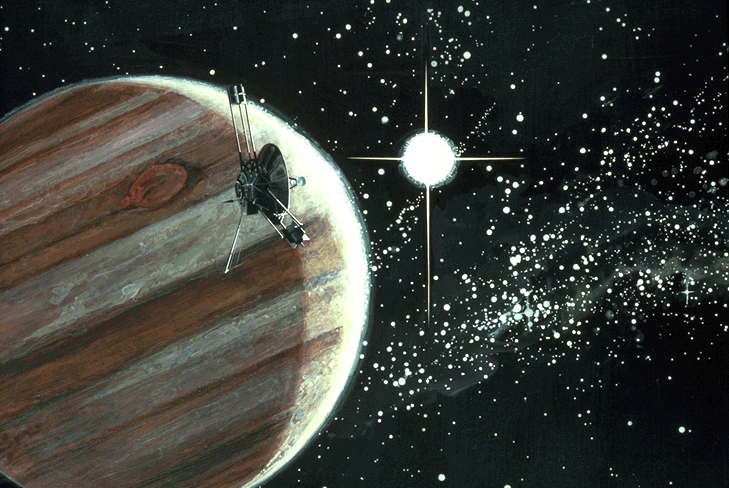Solar system:
Pioneer 10 departs solar system on this day in history.
“The next day, it radioed back its first scientific data on interstellar space.”
The following written content via History

After more than a decade in space, Pioneer 10, the world’s first outer-planetary probe, leaves the solar system. The next day, it radioed back its first scientific data on interstellar space.
On March 2, 1972, the NASA spacecraft was launched from Cape Canaveral, Florida, on a mission to Jupiter, the solar system’s largest planet. In December 1973, after successfully negotiating the asteroid belt and a distance of 620 million miles, Pioneer 10 reached Jupiter and sent back to Earth the first close-up images of the spectacular gas giant. On June 13, 1983, the NASA spacecraft left the solar system. NASA officially ended the Pioneer 10 project on March 31, 1997, with the spacecraft having traveled a distance of some six billion miles.
Headed in the direction of the Taurus constellation, Pioneer 10 will pass within three light years of another star–Ross 246–in the year 34,600 A.D. Bolted to the probe’s exterior wall is a gold-anodized plaque, 6 by 9 inches in area, that displays a drawing of a human man and woman, a star map marked with the location of the sun, and another map showing the flight path of Pioneer 10. Read more from History.





